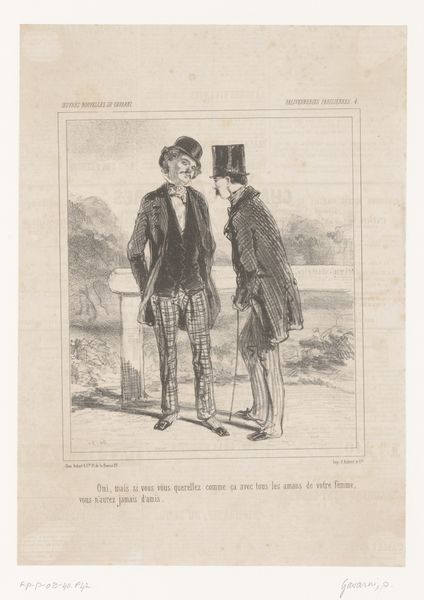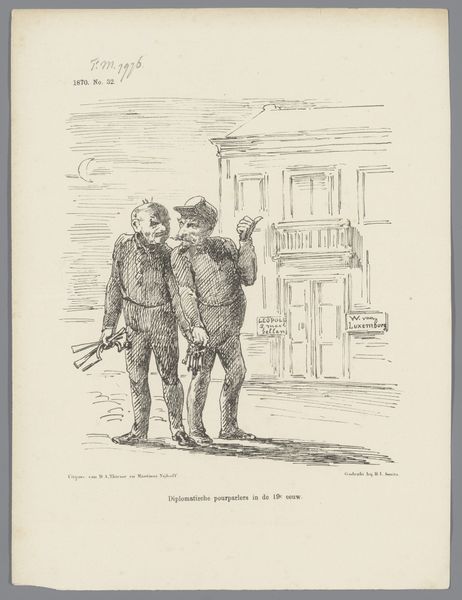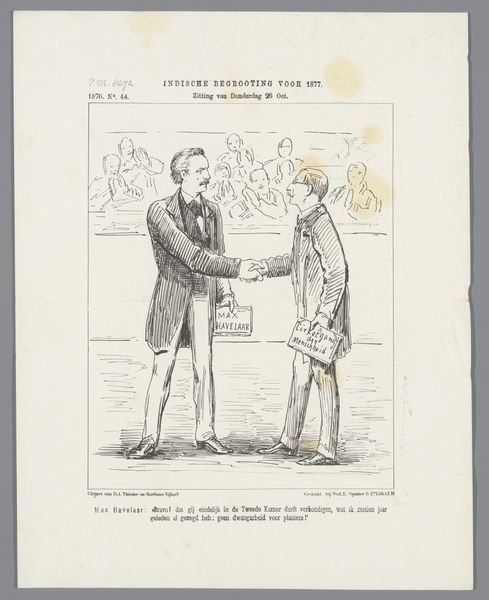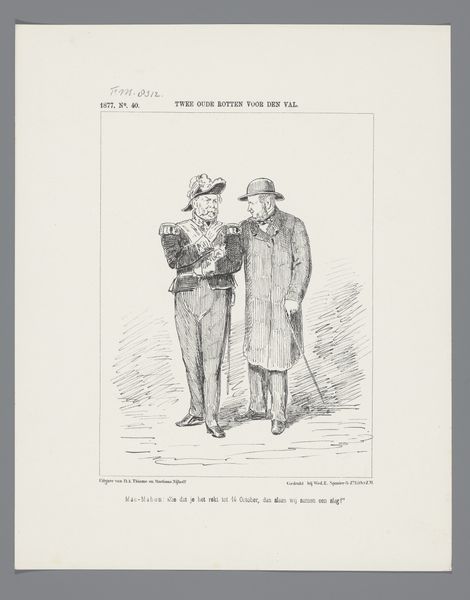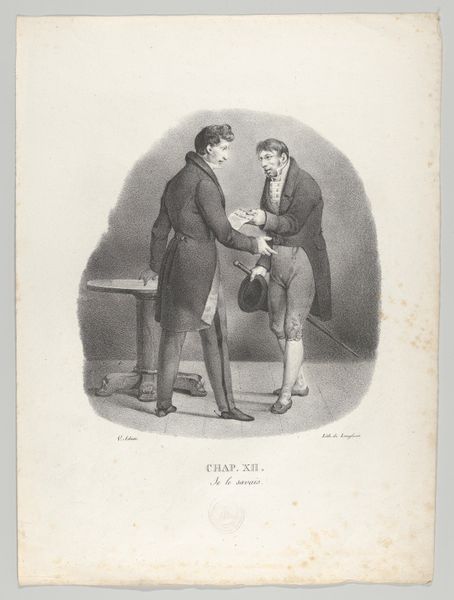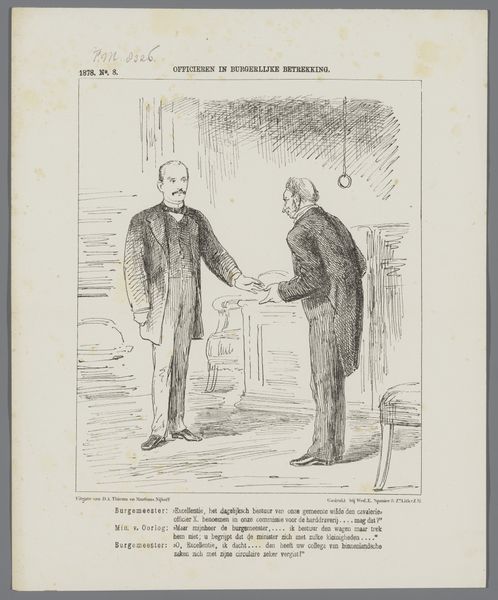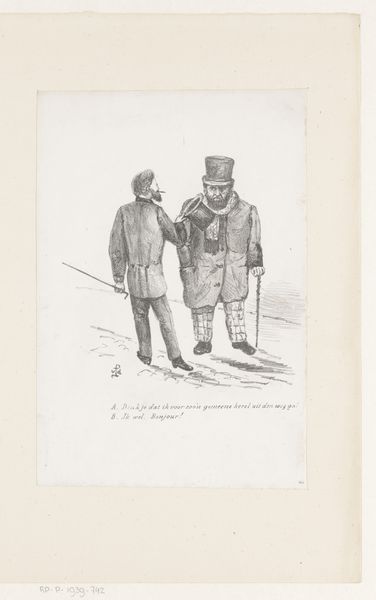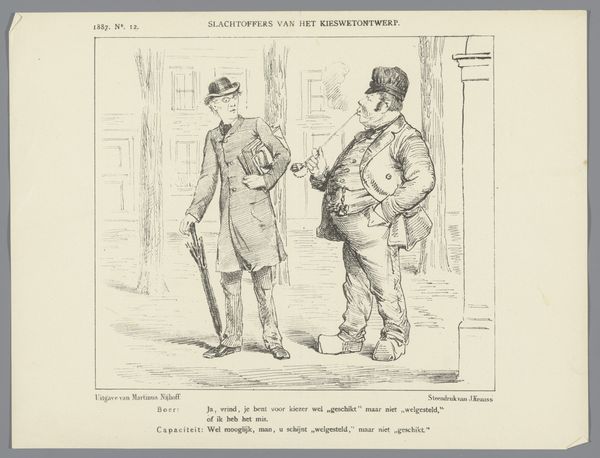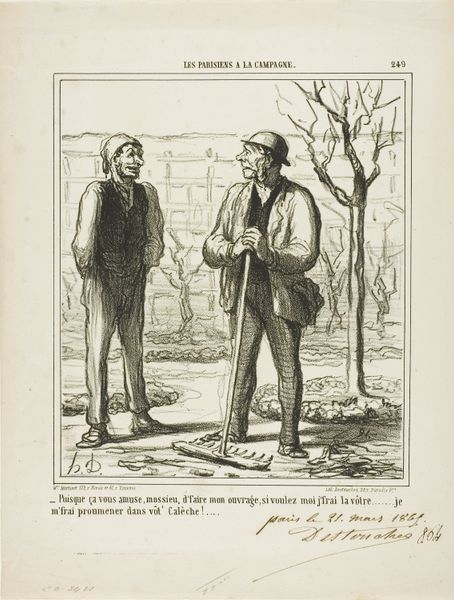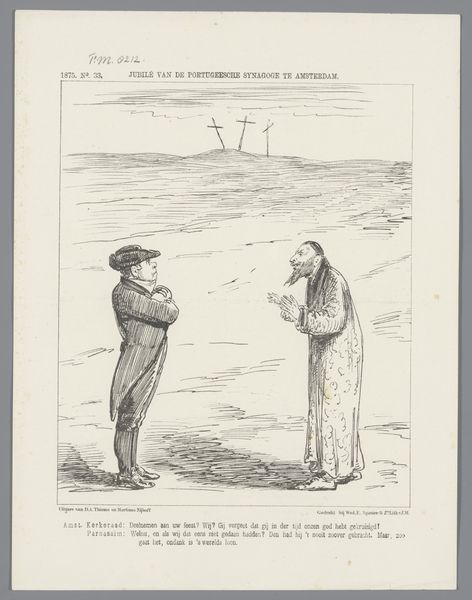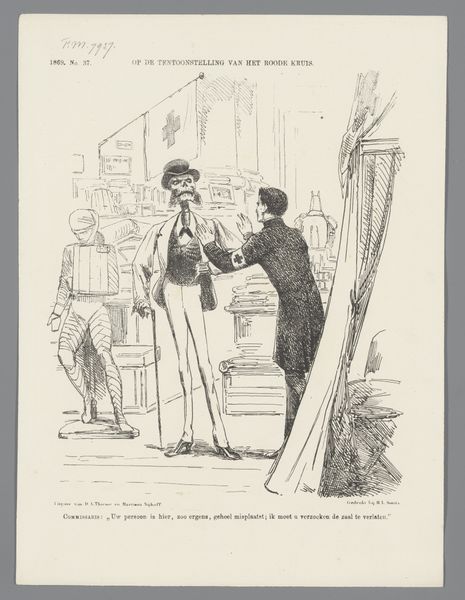
Spotprent op de voorgestelde verlaging van de census in de steden, 1874 1874
0:00
0:00
drawing, pen
#
portrait
#
drawing
#
16_19th-century
#
narrative-art
#
caricature
#
pen
#
genre-painting
#
realism
Dimensions: height 275 mm, width 215 mm
Copyright: Rijks Museum: Open Domain
Editor: This is "Spotprent op de voorgestelde verlaging van de census in de steden, 1874," a pen drawing from 1874 by Johan Michaël Schmidt Crans. It strikes me as a political cartoon, sharply contrasting two figures. What do you see in this piece? Curator: It's a fascinating glimpse into the socio-political climate of the Netherlands at the time. The key here is understanding the census, which determined voting rights. This drawing, as a form of public commentary, participates in the debates of the time. Editor: So, the differing appearance of the men matters? Curator: Absolutely. One, a burly figure likely representing a farmer or working-class individual, is juxtaposed against a thinner, more refined man, presumably an advocate. Notice the title "Census-Kansen," referencing census chances, and the text explaining it beneath the drawing. The lowered census requirements may be a reference to opening the vote to more individuals. This artwork engages with, and potentially critiques, shifts in the social and political order. Do you think the visual disparity in stature reflects a certain bias? Editor: It definitely feels like it. The farmer figure is exaggerated, almost grotesque, while the advocate appears more "civilized," suggesting perhaps anxieties surrounding expanding voting rights. The composition implies they are separated by more than just physical space. Curator: Precisely. And how might the newspapers or public discourse of the day have shaped Crans' perspective? Considering the political implications embedded in such public imagery, who benefits from the perpetuation of such representations? Editor: It really highlights the power dynamics embedded in seemingly simple choices of representation, influencing public opinion. This makes you really think about not just art’s aesthetic, but its function. Curator: Indeed. It also illustrates how social class influenced public political voice, a critical observation for understanding our history.
Comments
No comments
Be the first to comment and join the conversation on the ultimate creative platform.

